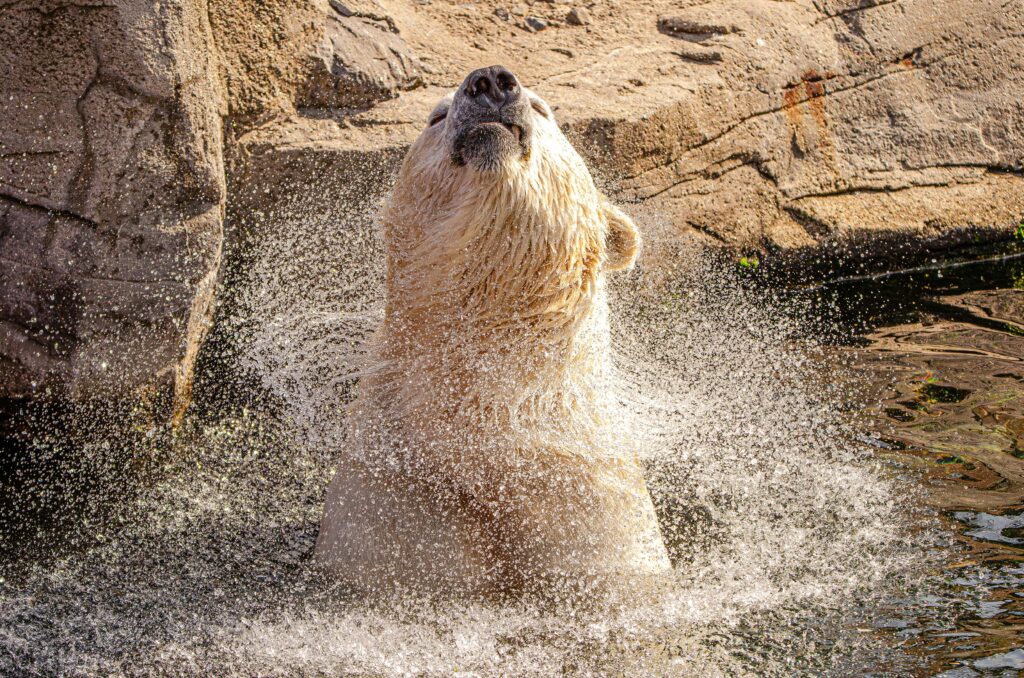Midnight Sun & Arctic Life

Food Time
In the Arctic summer, the sun never sets. For weeks — sometimes months — the sky glows through the night, casting long shadows at midnight and golden halos over the tundra at 2 a.m. Time stretches. Sleep patterns vanish. And the wild adjusts not with confusion, but with urgency. This is the season of opportunity. In a land where winter dominates most of the year, summer is a narrow window — and every living thing makes the most of it.
Caribou arrive in herds, calves wobbling at their sides. They move across soft tundra, feeding nonstop, covering kilometers each day as insects swarm and predators follow. Arctic foxes dig fresh dens or return to old ones, now full of pups. They hunt the nesting grounds of seabirds and follow polar bears to scavenge scraps. Their coats have shifted to summer gray, blending in with stone and moss.
Seabirds fill the cliffs — guillemots, kittiwakes, puffins — returning from long sea journeys to nest in crowded colonies. The air rings with their cries. In the water below, narwhals and belugas follow ice edges as they retreat, feeding in nutrient-rich currents while the ocean is briefly open and alive.
And then there’s the polar bear. Still solitary, still wandering. It travels across sea ice that now breaks and thins daily. It hunts, rests, swims for miles — a nomad in a melting world. Under the midnight sun, the Arctic feels boundless. But even here, change is accelerating. Summer is brighter now, warmer. The light is the same, but the margins are shifting.
Photographers call this season surreal. Wildlife never truly disappears, and the best light often comes when your body expects darkness. Sleep becomes optional. The line between day and night blurs. And in that constant twilight, the Arctic reveals its most intimate stories — not loud or fast, but precise, adapted, and fleeting.
Because in the land of the midnight sun, life doesn’t pause. It pulses — quietly, steadily — under a sky that never sleeps.
Caribou arrive in herds, calves wobbling at their sides. They move across soft tundra, feeding nonstop, covering kilometers each day as insects swarm and predators follow. Arctic foxes dig fresh dens or return to old ones, now full of pups. They hunt the nesting grounds of seabirds and follow polar bears to scavenge scraps. Their coats have shifted to summer gray, blending in with stone and moss.
Seabirds fill the cliffs — guillemots, kittiwakes, puffins — returning from long sea journeys to nest in crowded colonies. The air rings with their cries. In the water below, narwhals and belugas follow ice edges as they retreat, feeding in nutrient-rich currents while the ocean is briefly open and alive.
And then there’s the polar bear. Still solitary, still wandering. It travels across sea ice that now breaks and thins daily. It hunts, rests, swims for miles — a nomad in a melting world. Under the midnight sun, the Arctic feels boundless. But even here, change is accelerating. Summer is brighter now, warmer. The light is the same, but the margins are shifting.
Photographers call this season surreal. Wildlife never truly disappears, and the best light often comes when your body expects darkness. Sleep becomes optional. The line between day and night blurs. And in that constant twilight, the Arctic reveals its most intimate stories — not loud or fast, but precise, adapted, and fleeting.
Because in the land of the midnight sun, life doesn’t pause. It pulses — quietly, steadily — under a sky that never sleeps.
